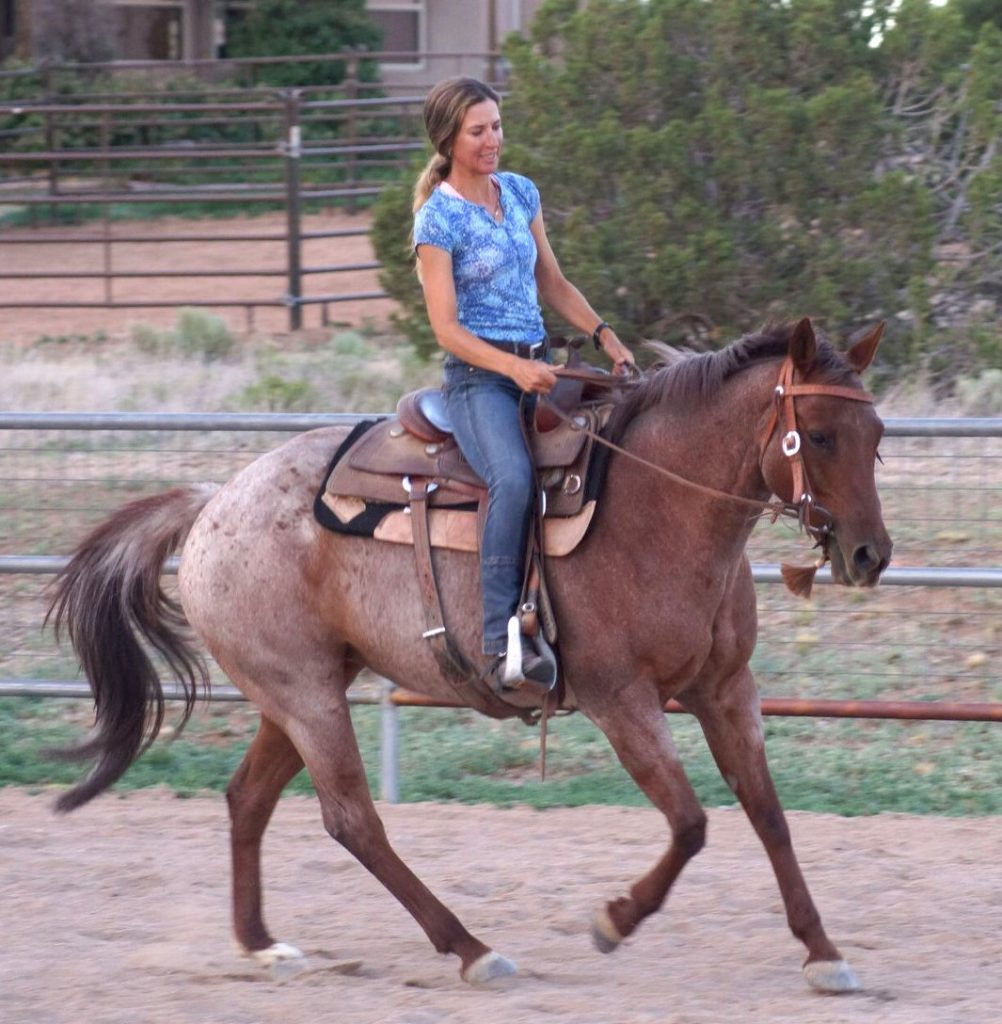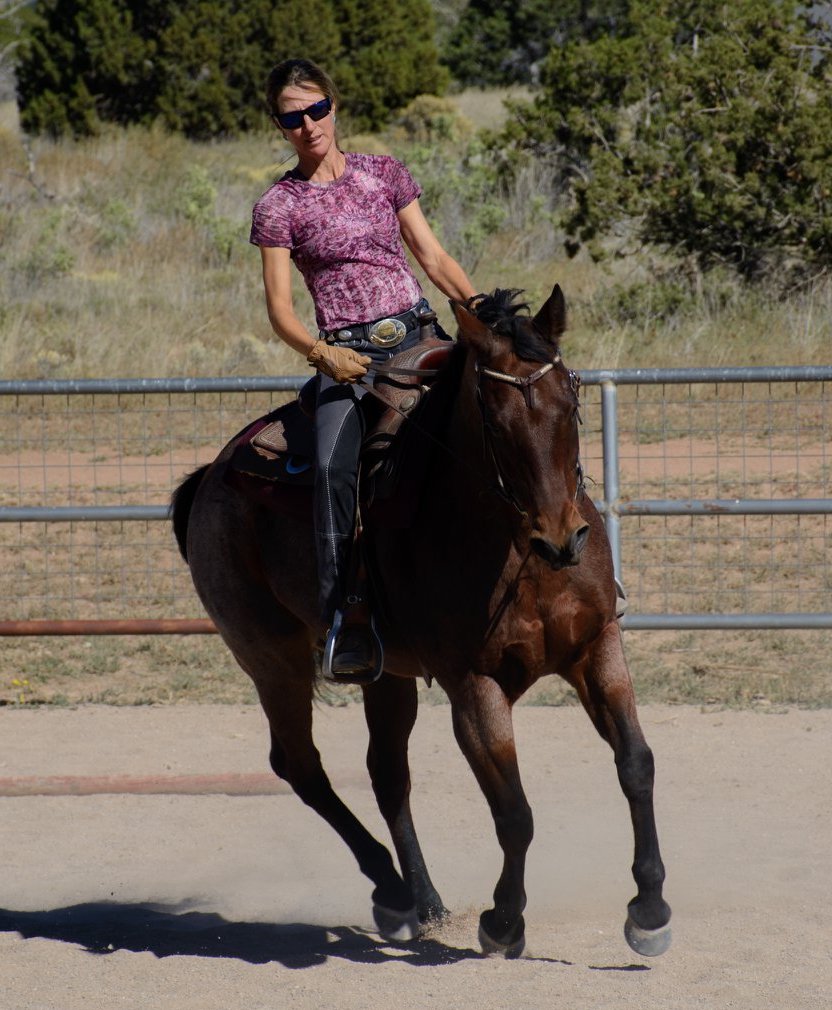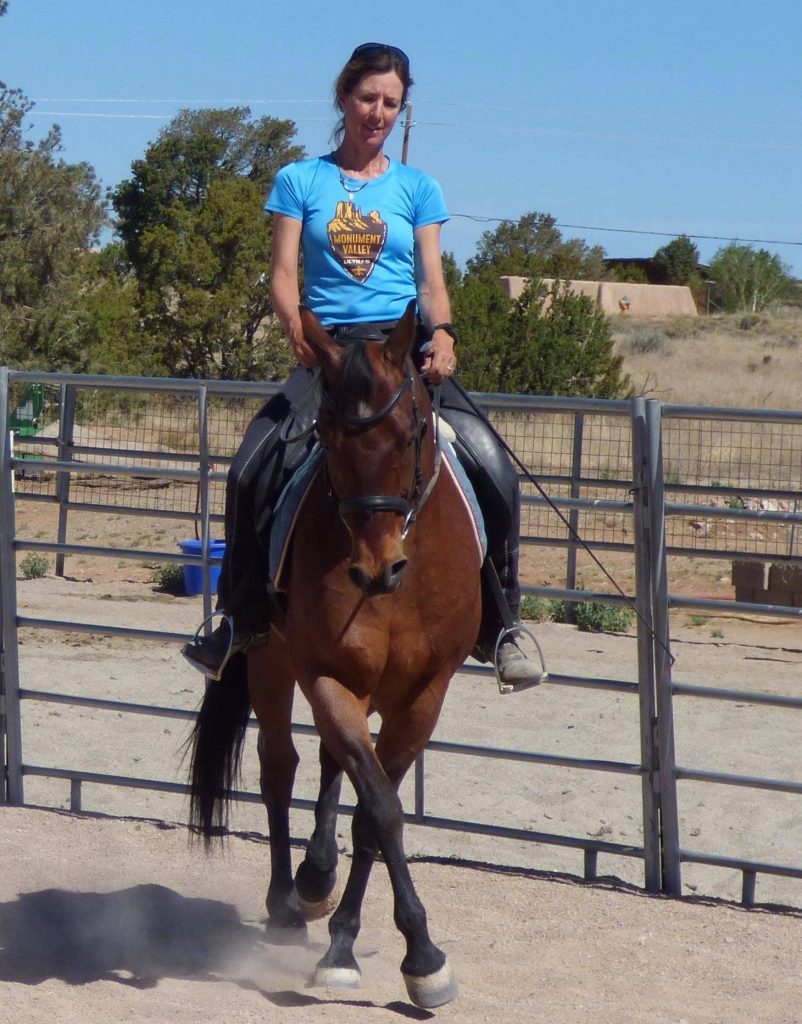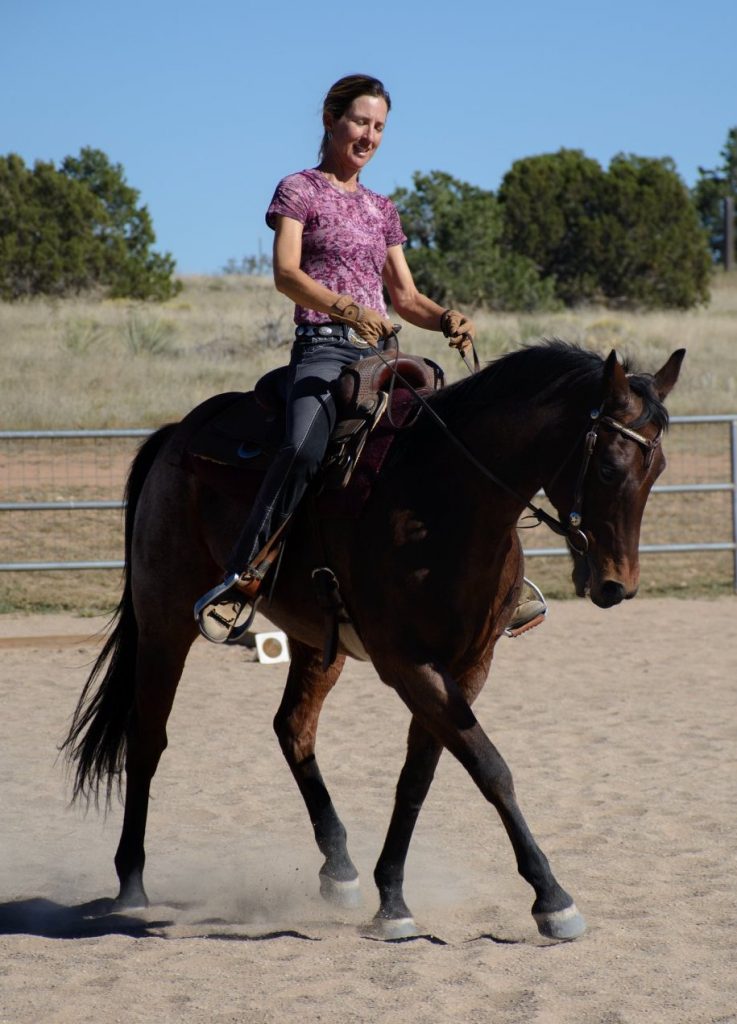 Editor’s Note: Best Horse Practices Summit presenter Katrin Silva grew up riding dressage in Germany before moving to the United States at age 19 to learn to ride Western. She’s been riding both disciplines for the last twenty years and is a regular guest columnist for Cayuse Communications. She lives in New Mexico where she works with dressage and Western clients. Visit her blog here.
Editor’s Note: Best Horse Practices Summit presenter Katrin Silva grew up riding dressage in Germany before moving to the United States at age 19 to learn to ride Western. She’s been riding both disciplines for the last twenty years and is a regular guest columnist for Cayuse Communications. She lives in New Mexico where she works with dressage and Western clients. Visit her blog here.
Buy her book, Dressage for All of Us here.
Katrin writes:
I work hard and am proud of it. Until recently, “lazy” sounded like the ultimate insult.
It doesn’t anymore. Laziness has become my new ambition. I am realizing more and more that good riders are as lazy as possible. I don’t mean we should quit riding and binge-watch Netflix or quit, or use training shortcuts, like draw reins and crank nosebands.
 What I mean is: Let’s let the horse do most of the work.
What I mean is: Let’s let the horse do most of the work.
I see many riders working harder than their horses. Some squeeze their horses with their legs all the time, using a lot of muscle power just to sit in the position they consider “correct.” Others move their seat a lot to make the horse move forward or sideways. A third group hangs on to the reins for dear life, trying to achieve good contact by pulling on their horses’ mouths.
Well-meaning instructors (myself included) often tell students to ask for more – more bend, more engagement, more energy, more connection. Riders interpret this as having to work more. They push more. They pull more. They tighten more of their muscles. Their faces become red with effort. The don’t look like they’re enjoying any of this. Neither do their horses.
This tendency is rooted in our culture. We live in a competitive world. From the time we can walk and talk, we hear that only those of us who work hard will get ahead. Achievement is a direct function of the effort we put into anything: school, college, career, sports, even relationships.
So, when we ride horses, we think doing more will make us better riders. To be the best riders we can be, to make our horses the best they can be, we have to be active – with our seat, with our hands, with our legs, and even with our minds.
And yet, this is, in fact, counter-productive. Our horses become irritated or anxious. When we do too much, they tend to either shut down or run off. They either overreact or stop reacting altogether.
Meanwhile, our goal of horse-rider harmony eludes us. We catch glimpses of it on the horizon, but the harder we chase it, the farther it moves away. The partnership we dream of teases us from a distance and remains out of reach.
When I watch really good riders, I don’t admire how hard they work. I admire how easy they make it look. I don’t see Ingrid Klimke’s knuckles turn white. Her horses move with ease and elegance. She just sits there. Or at least that’s the way it looks. I don’t see good working cowboys spur and squeeze their horses with every stride.
Good riders stand out because they do less, not more.
It’s human nature to want to help your horse, but you can’t do his work for him. My goal for every horse I ride is to let him cruise – for a few strides, or for a full circle. My goal is not to tell my horse “come on! come on, come on” with every step. My goal is to be quiet whenever possible, so my words, i.e. my aids, mean something when I use them. I spend as much riding time as I can in a neutral position – a place from which I can correct or help the horse if needed, where I’m not urging him along or holding him back all the time.
Consider leg aids:
The horse does not learn from the leg aid itself. He does not move away from the leg because it’s there. He moves away from the leg because it goes away again. The teaching moment is the cessation of the aid, not the aid itself. If the horse does not respond, squeezing or nagging with the leg will only teach the horse to ignore the aid. It’s better to use a nudge, or a quick touch with the spur, or anything that elicits a response. Even if the response was not perfect, it’s crucial to take the leg or spur back to the neutral zone at the exact moment of response – not five seconds later. Focusing on being done with the leg aid is the only way to make the horse more responsive.
Consider rein aids:
The horse gets lighter in the contact because of a well-timed and barely visible release of the rein, not the rein aid itself. The release is a part of the half-halt, not a separate thing, not an unnecessary and often forgotten afterthought.
Yes, we need to use leg aids and half-halts. Yes, we need to sometimes correct our horses with a stronger aid. But the goal is to move back into the neutral kind of riding as soon as possible with hands that follow the horse’s mouth, a softly following seat, and legs that hover around the horse’s sides.
Horses become softer, lighter, and more responsive when our goal is to work less hard. Try to let go as soon as your horse responds. Try to take your legs and reins back to the neutral zone a fraction sooner than you think you can. Your horse will be happier. I know mine are.

Love this Katrin! When we can reside back in the neutral zone as quickly and smoothly as possible, we become better riders and our horses enjoy being better partners with us.
Thank you, Julie! I find it’s even harder for me as a professional trainer, because I always want to be sure I earn what clients pay me. But paradoxically, I do a better job when I don’t try so hard.
Love this. Between long recovery from injury and naturally VERY lazy horse, my mare was completely ignoring my legs, even with spurs or a crop. I decided to start her over from the very basic, JUST MOVE FORWARD. The answer to all your problems is MOVE FORWARD. She reaaaaally responds to the end of the mecate, not even touching her, just slapping my thigh. So now we are re-learning what my leg means and what “life in the body” means. I was working SO hard. Not only was it not fun, it was really blowing my balance and seat. Lo and behold, there’s a pretty nice moving horse hiding inside there.
Great insight (as usual, Kerry 🙂
Kerry, yes – if your horse is confused about what your leg aids mean, you have to find something that works, even if it’s not what most classical training manuals recommend. Forward really is the answer to every trainng issue, but not just any old kind of forward – not a tense, rushing forward, but a forward with undertones of ease and trust.
Thank you, Katrin! Great article.
Thank you, Eva! Please hug Remy from me.